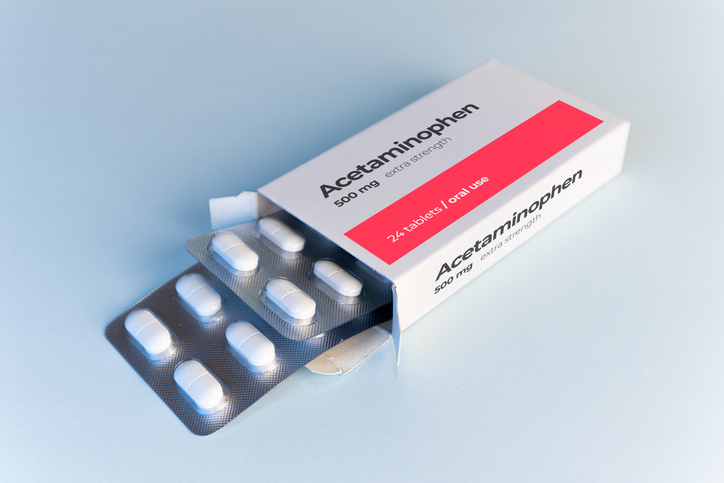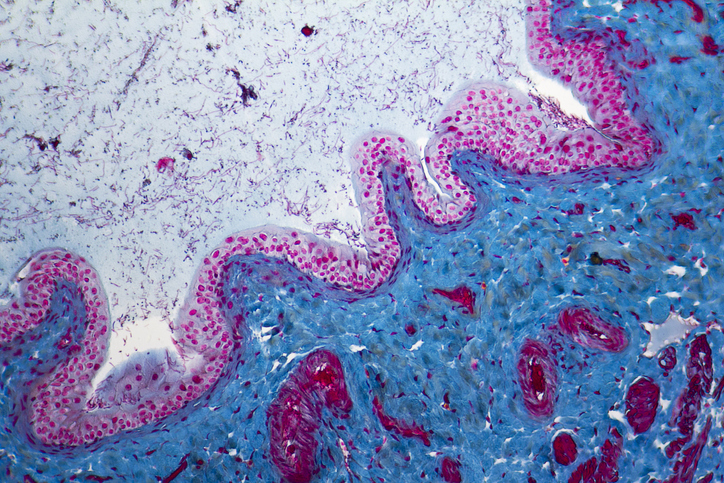Dr. Mike Clayman, CEO of Flexion Therapeutics, on Developing New Therapies for Musculoskeletal Disorders
By Rob Dillard - Last Updated: April 28, 2023DocWire News with spoke with Mike Clayman, M.D., CEO at Flexion Therapeutics, a company focused on the development of novel, local therapies for the treatment of musculoskeletal conditions – with one approved drug – ZILRETTA® for osteoarthritis knee pain.
See what Dr. Clayman had to say about these therapies.
DocWire News: Can you give us an overview of Flexion Therapeutics and some background on yourself?
Dr. Mike Clayman: Sure. Flexion was founded in 2007. Using a different business model to start with, we rapidly pivoted initially to the osteoarthritis space, now more broadly to musculoskeletal diseases, as you say, osteoarthritis, postoperative pain, and low back pain are areas of focus for us. And the other important thing to note is that we’re particularly focused on local therapy. So injections into the knee for knee osteoarthritis pain, peripheral nerve block where you apply the medicine to the nerve of interest. And we have progressed, as you say, to commercial products, Zilretta, which we’ve had on the market selling ourselves as an injectable for knee osteoarthritis pain since late 2017, and are progressing our pipeline assets.
Just a real little bit about me, I’m a physician by training in academia, was at the University of Pennsylvania, went to Eli Lilly and Company, spent 20 years there learning how to do drug development, clinical research, clinical trials, advanced a number of novel medicines to the clinic and to approval, obviously as part of a team, no one does anything by themselves in such a large and complicated effort, but learned a lot of really good, had a lot of really good training there. And then in 2007, took early retirement from Lilly and founded with my co-founder, Dr. Neil Bodick, Flexion Therapeutics.
DocWire News: Why is there a need for new treatments for musculoskeletal disorders such as OA? And can talk to us about ZILRETTA – what it is, how it works?
Dr. Mike Clayman: Yeah. Osteoarthritis in particular is so prevalent. There are 30 million US citizens who have symptomatic osteoarthritis. It can affect multiple joints, a hip, knee, shoulder, the small joints of the hand. Knee is probably one of the most affected. Fifteen million patients in the United States have symptomatic knee osteoarthritis and see their physicians each year for that condition. And there is a real need for innovation in terms of treatments in this space. The treatment paradigm for osteoarthritis is that you start out with oral medications, Tylenol, moving on to non-steroidal anti-inflammatory drugs like Advil, moving on to, as cases become more severe, not uncommonly opioid, because the pain of osteoarthritis can limit function so severely and can be so uncomfortable that patients are driven to do whatever they can to quell the pain. Once someone has exhausted their oral treatment options, they move into what we call the “intraarticular injection space,” the injection directly into the knee if you have knee osteoarthritis.
And there are 8 million injections a year for knee osteoarthritis pain. And until ZILRETTA, there were only two classes of drugs, the standard steroid injections, none of which were formulated for sustained release, which are injected into the knee, the steroid then floods out of the knee very rapidly over the course of hours to days. Steroids, as you know, are powerful anti-inflammatories, and in this setting, they do suppress the inflammation and reduce pain, but pain returns typically in two to six weeks after an injection. And by convention, steroids are not injected any more often than every three months. So you can imagine a patient going to their physician, getting a steroid injection, experiencing pretty good pain relief. And then a month later raising their hand and saying, “I’m ready for my next injection.” And they’re told to come back in two months, that doesn’t support a satisfying experience.
And the other class are the hyaluronic acids, which I think are generally seen as providing relatively modest pain relief. And we saw the unmet medical need associated with the steroids and took a commonly injected steroid, formulated it in a polymer called PLGA, which ultimately degrades to CO2 and water, and then manufactured that as microspheres with the idea that once injected into the knee joint into an aqueous environment, these microspheres would slowly degrade, releasing the embedded steroid, and achieving therapeutic concentrations for at least three months. And that’s exactly what we’ve been able to demonstrate in our clinical studies, in our pharmacokinetic studies by sequentially sampling synovial fluid, that’s that what happens. And what we intended originally to do was to achieve longer pain relief than what was achieved with the standard steroids.
What we saw on osteoarthritis specific measures of pain relief, functional improvement, stiffness improvement, and quality of life was not only longer effect, but better effect, and therein lies our enthusiasm for this product. And since launch, I can tell you, we hear many, many times from patients about the gratifying experience they’ve had with ZILRETTA, and for the first time in years, we hear this all the time, a patient is able to without pain do the physical activity that gives their life meaning, from gardening or walking the dog on one end of the spectrum, to golfing or skiing in between, to running a marathon, doing a triathlon, or summiting a mountain at the extreme.
So it’s an enabling. We see it as an enabling therapeutic, and the phrase that grateful patients frequently use is, “ZILRETTA gave me my life back. For the first time in years I can do X.” And I’ll just mention that we’ve seen this through all kinds of athletic or standard activities of daily living experiences. And quite recently, we’ve been made aware of former elite athletes who have had similarly gratifying experiences with ZILRETTA. So Mike Eruzione, who was the captain of the 1980 Olympic ice hockey team that won gold in lake Placid, Rod Woodson, one of the most elite defensive backs in the history of the NFL, Sheryl Swoopes, who by some people’s consideration is the very best WNBA player to ever play, are now in their retirement years, and have suffered from the osteoarthritis that have limited their activities, and have raised their hand, and said to us, “ZILRETTA made such a difference for me.”
I mean, Mike Eruzione, 18 holes of golf without his knees swelling up and needing to kind of tend to that. Rod Woodson being able to jog for the first time in years without pain, and Sheryl Swoopes being able to exercise the way she’d like to without pain. And we see those really as patient indicators, because it is very representative of what we see and hear from other grateful patients. So we’re very pleased with that. We’re super excited about the progress we’re making, and we see that there’s a great opportunity to have an expanded impact with increasing numbers of patients.
DocWire News: Can you talk to us about FX201 – what it is, how it works, and the ongoing clinical study? How was the efficacy of FX201 assessed?
Dr. Mike Clayman: Yeah. So FX201 is a gene therapy that gets injected directly into the knee joint, into the synovial fluid. The vector it expresses interleukin-1 receptor antagonist, a powerful naturally occurring protein, a powerful anti-inflammatory naturally occurring protein that we all have. And the elegance of the construct, which originated in Dr. Brendan Lee’s lab at the Baylor College of Medicine, is that expression of that IL-1Ra is under the control of an inflammation sensitive promoter. So think about it this way, the vector is injected into the joint, is taken up by the cells of the joint, those cells become factories for producing interleukin-1 receptor antagonist when inflammation is present. And once expressed, that interleukin-1 receptor antagonist suppresses the inflammation and then turns off the construct.
So you can think of it as on demand anti-inflammatory effect. The preclinical data in models of osteoarthritis across multiple animal species, very encouraging. And the vision for this product based on those data would be at least six to 12 months of meaningful pain relief and functional improvement with the potential to slow disease progression. We’re gratified to be in the clinic, as you mentioned in your intro, we’re in the middle of a single ascending dose study. We’ve dosed the low dose cohort, the mid dose cohort. We’re in the process of dosing the high dose cohort, and we’ve also initiated expansion cohorts, so that we’re increasing the numbers of patients that we’re treating with low, mid, and high doses. Each in the standard single ascending dose study, the cohorts are five to eight patients per group. The expansion allows us to add as many as 20 patients to the low and mid dose cohorts and probably a fewer number to the high dose cohort.
We expect that by the end of the year, we’ll have data to discuss. Your specific question about efficacy, clearly this is focused on safety and tolerability, but we are capturing efficacy data. In particular, the standardized questionnaire data for characterizing pain relief, which is what’s called, “WOMAC A,” Western Ontario and McMaster questionnaire, WOMAC, which is a standardized and validated osteoarthritis specific measure. The A questionnaire is focused on pain, how much pain do you have walking on a flat surface, going up and down stairs, getting in and out of bed, for example. And then there’s a B domain that looks at stiffness, and a C domain that looks at function.
In this study, we are focused on WOMAC A to characterize pain relief. We are also using the so-called KOOS questionnaire to characterize changes or improvements in function. So we will have those data periodically assessed in the course of the study, patients are going to be followed for two years, and we’ll be able to characterize the magnitude effect of effect and durability of effect. We just announced data at the American Society of Gene and Cell Therapy in May, earlier in May, in the low dose cohort, where we saw evidence of efficacy out to one year in numbers of patients in that first cohort. So preliminary, encouraging, we’re looking forward to gathering additional data that can give us a more robust consideration of efficacy and safety in the treated patient population.
DocWire News: Can you talk to us about FX301 – what it is, and how it works?
Dr. Mike Clayman: Yeah, FX301 is every bit as exciting as FX201 in a very different space. That space is so-called peripheral nerve block, where you inject typically an anesthetic agent around the nerve of interest that supplies sensation to that part of the body that you’d be operating on, so that in the post-op period, you would have that sensation blunted, and you’d have pain relief. One of the challenges with currently existing peripheral nerve blocks, and there are millions of such nerve blocks that are done each year, is that they all involve what are called caines, C-A-I-N-E-S, Lidocaine, particularly bupivacaine or ropivacaine. And one of the challenges with the caines is that there are indiscriminate sodium channel blockers.
So they’re as happy blocking sodium channels on motor fibers as they are on sensory fibers. So what you get in addition to pain relief associated with a blockade of a sensory fiber is motor compromise, because you’ve blocked those sodium channels and the ability to transmit impulses normally on motor fibers. And so this can be a challenging dynamic for someone who’s had this peripheral nerve block with a caine, wakes up the next morning following say total knee replacement surgery, motor function is compromised, ability to begin rehab optimally is also compromised.
So we did a brainstorming kind of a session with a very well-regarded key opinion leader anesthesiologist who does a lot of peripheral nerve blocks. And he said, “First of all, there’s no nerve block out there that gives you reliably even three days of pain relief. So if you could give me something that gives at least three or more days of pain relief, that would be really, really important. And if you could marry that to something that avoids any compromise of motor function, that would be fantastic.” And we took that as a challenge, and long story short, we in licensed a selective sodium channel blocker that does not compromise motor function, but restricts its action to sensory fibers, and we married it to a thermosensitive gel that was originated by our scientists at Flexion, the formulation scientists.
This thermosensitive gel is liquid at room temperature and gels at body temperature. So the idea is you mix the active in with the thermosensitive gel, you inject it as a liquid around the nerve of interest, and within a minute, that liquid gels and becomes a depot for the release of drug at high therapeutic concentrations for a period of time. And our preclinical data would suggest that that period of time is at least three to seven days. And our preclinical data also demonstrate in a mini pig model of surgery that FX301 provides better and longer pain relief than liposomal bupivacaine, which is the market leader, and preserves motor function in a way that liposomal bupivacaine does not.
Clearly the animals treated with liposomal bupivacaine had serious compromise of motor function, motor function in animals treated with FX301 was completely intact. So we’re super excited about that. That’s in a bunionectomy study. Bunionectomy is a commonly done surgical procedure on the foot, and that study is enrolling well. We’re going to characterize in a dose response fashion the safety and efficacy of FX301 in those patients, and we will look for an encouraging signal, and have the potential to expand a cohort of interest to potentially achieve statistical significance. Those data, along with the data from FX201, will be reported out we fully expect by the end of the year, and that will help us understand the value proposition, and whether the data would support the vision for each of those new medicines.
DocWire News: Closing thoughts?
Dr. Mike Clayman: Well, the only thing I would add is, as it relates to ZILRETTA, we do intend to start a shoulder study, because we’re currently indicated for injections in knee. We see a very large unmet medical need in shoulder, and we intend to initiate a registration trial in shoulder before the end of the year. When I look at ZILRETTA progress to date, the increasing numbers of gratified patients who have received it, the opportunity to expand the label into shoulder for ZILRETTA, and the fact that we’re knocking on the door of defining the value proposition with clinical data for both FX201 and FX301, each of which could be transformative in their respective spaces, the most exciting time in the history of the company. So stay tuned, Rob, we’re looking forward to reporting out more in the course of the year.







 © 2025 Mashup Media, LLC, a Formedics Property. All Rights Reserved.
© 2025 Mashup Media, LLC, a Formedics Property. All Rights Reserved.